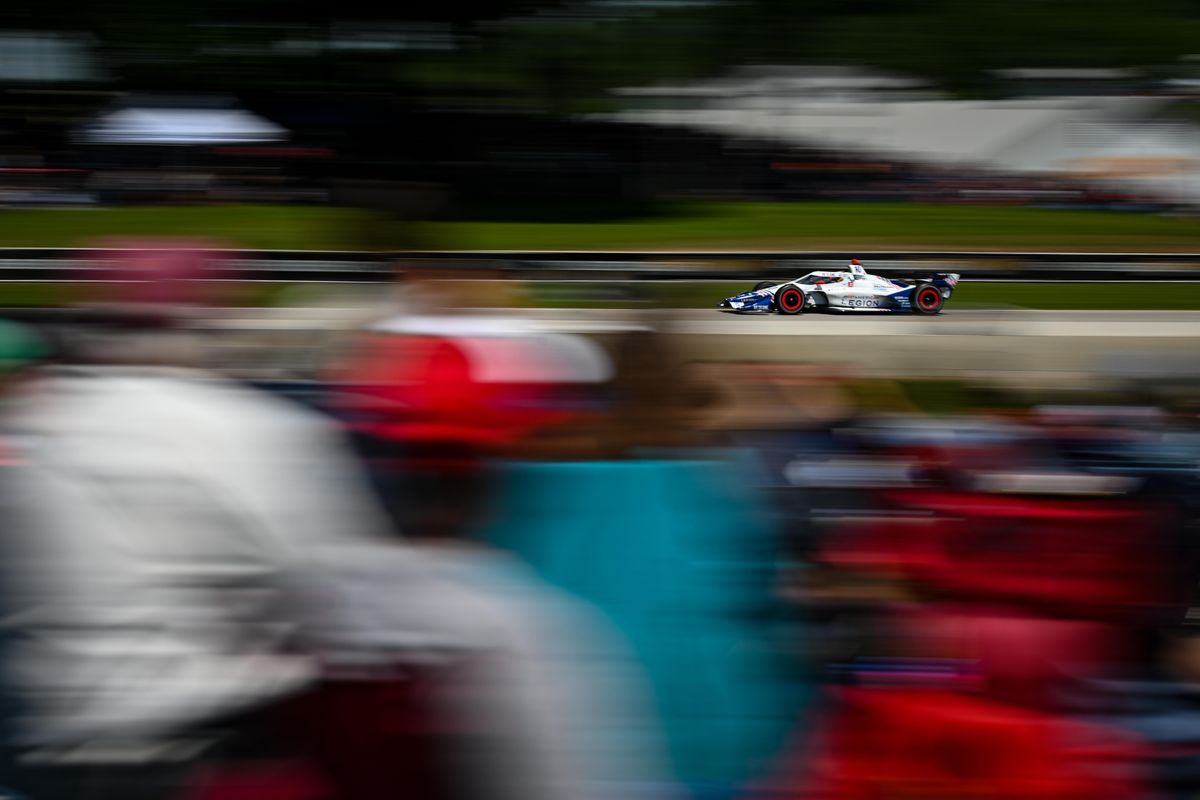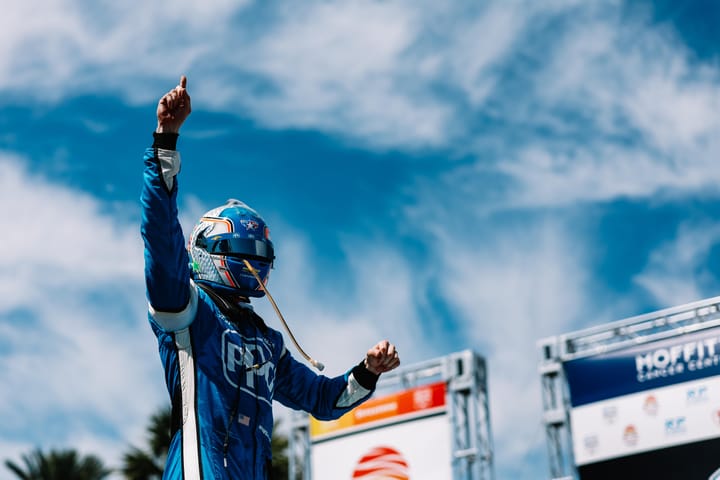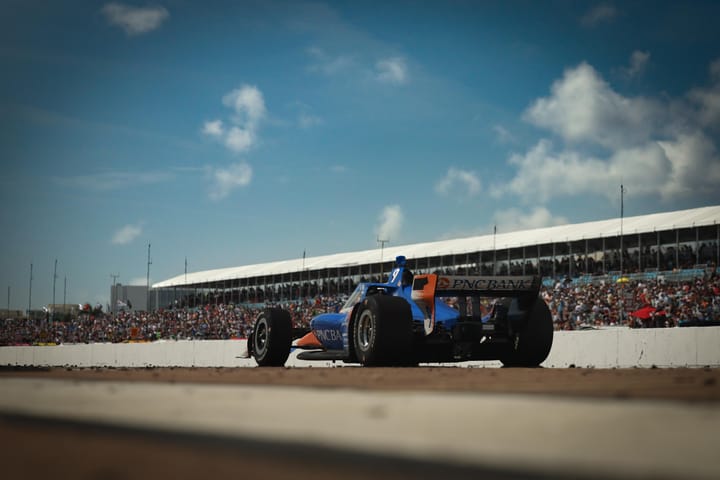CLOSE THE DOOR, OPEN THE WINDOW
The #IndyCar preseason opens this week. To start the season, TC wrestled with the relatively positive state of the series, and how instead of listening to disgruntled fans, we should be listening to Tyler, the Creator.

The NTT IndyCar Series begins its 2023 preseason this week with testing at Thermal Club, a private course in California. This essay kicks off the 2023 IndyCar season.
"Sometimes you gotta close a door to open a window"
-Tyler, the Creator (2019)
Racing is one of the most natural activities on the planet.
Unless you're born to sit idly by and in all instances avoid competition in all its forms — which would defy nearly every evolutional expectation — race cars offer a glorious appeal. Human beings pushing themselves to their physical limits to go as quickly as possible is engrained in the DNA of each and every one of us. If you haven't found out already, you just have to unlock it.
In its purest form, motorsports satisfies every competitive urge you could have. Filled with the primal appeals of racing your siblings down the hallway, aided by a complete sensory overload of race cars so powerful that, despite what the other sports leagues might have you think, two of the largest gatherings of people on the earth every year take place in Indianapolis, Indiana, and LeMans, France, to watch teams of humans push vehicles and themselves to the absolute limit to be first. You can't help to be drawn to it, the same way your body craves sugar and water.
I feel passionately about the appeal of racing. Why do I always feel so defensive about it, or that my favorite sport has somehow hit its ceiling — or worse, is about to collapse?
In the 21st century, the politics and infighting in motorsports communities have threatened and damaged the raw, simple appeals that make it great. Often, the fighting is so asinine and completely devoid of critical thinking it's truly breathtaking. I can't speak to other centuries as I wasn't alive for them.
And no, I'm not talking about things like equality and acceptance of underrepresented drivers, team members and fans. Women, BIPOC, LGBTQ and other people who have been historically marginalized in motorsports should have the same opportunity to race as their white, predominantly male counterparts.
I'm talking about an honest plea for some fans last week to have Roger Penske, the man who requires perfection in nearly everything, to just set up some camera from Amazon pointed at the track for a practically meaningless preseason test. Indianapolis Star reporter Nathan Brown summed up the situation well: we all love racing and it might have been nice to have a full production crew for the test, but some things aren't worth the effort.
Maybe it should be taken as a positive, a sign of fans, without any true battles to fight, taking up arms on non-issues to a disproportionate degree. Maybe it's an amplification by machine, where a generally unpopular opinion is thrusted onto a much larger stage simply through an algorithm serving up the ideas only because they include certain proper nouns.
A mountain out of a molehill by these fans. Maybe it's the offseason restlessness to see IndyCar again, or maybe it's a never-ending desire to grow and not repeat the mistakes of the 1990s in open wheel racing.
Was it the biggest IndyCar controversy of last week? Pretty close, if AJ Foyt Racing hadn't changed one of its team numbers to avoid an unintended white supremacist reference its two cars would have created. Of course, that was too much for some fans online, who clamored that the change was unnecessary because "of course they didn't mean that, who cares." To me it's clear that making a more welcoming environment for Black fans and team members is a good thing, but I digress.
A recent IndyCar fan survey proved some of my theories correct: IndyCar is growing at a fast rate, especially in international markets, and is doing so with a focus on making racing better and more accessible for everyone. The people I and others keep seeing on Twitter likely don't represent the majority (a win for the "Twitter isn't real life" crowd).
I think perhaps the best explanation for the constant discontent among some portions of the IndyCar community and myself can best be explained best by Tyler, the Creator: "sometimes you have to close a door to open a window."
We must acknowledge the sport isn't like it was in the 1990s, for better and for worse, and it must be different to meet the challenges of the 2020s. It's difficult for those that fell in love with the sport and saw it peak in the mid 1990s to hear, but it's time to close that chapter once and for all.
The "golden era" of IndyCar led directly to the split. It cannot and should not be replicated. Only over the last five years (2020 excluded) can the series say confidently "look at our growth."
The path the series is on is good. It's ok that it's different.
Rather than continue to pound the grievances of a few into the ground, we can pour our energy into making it great. Some tangible and monumental issues facing the series over the next five years include the following:
The once reliable stream of women competing in the series has dried up, limited to Simona de Silvestro for the growing Paretta Autosport project and Jamie Chadwick, an Indy NXT driver for Andretti Autosport likely in line for an IndyCar drive some day. Should both put together a full season campaign in the next two years, it would mean women represent roughly 7% of full time IndyCar drivers. That must change.
Miles Rowe, a young driver prospect working up through the IndyCar ladder, seems years off from a full-time IndyCar seat only because of his youth. His talent is immense. At present seems like he offers the best opportunity for a Black driver to join the IndyCar grid since George Mack in 2002. That's embarrassing. Support needs to be present for Black drivers looking for open wheel racing opportunities.
A third engine manufacturer would be key to growing the series even further, as Chevy and Honda are about at their limit with engine support. If I'm calling for expanding the grid to create more opportunity for underrepresented drivers I better acknowledge the practical barriers to doing so.
There: three tangible issues that, if solved in the next five years, mean IndyCar has created a wide range of opportunities and grown the series with new fans and leaving it in a much better place than putting up a camera ordered from Amazon at an open test in California ever would.
I'd also be wrong leave out the fact that IndyCar has made progress in some of these areas, with Roger himself funding and supporting some campaigns for young Black drivers, Rowe and Paretta. In addition, the series is making serious progress on issues related to climate change and sustainablility, introducing a composting program at IMS and IndyCar operated events, switching to a 100% renewable fuel this year and implementing a hybrid electric engine platform for 2024.
But that's another thing: it's great to have Roger Penske, a man of seemingly limitless wealth, come in and support these projects personally. It's even likely true the series may have had serious financial issues had he not been at the helm through the COVID-19 pandemic. But he's not going to be around forever.
The best I can sense, the IndyCar Series has its eyes forward and aimed the right goals. With 27, the 2023 season will have the most full time entries since reunification in 2008. A significant financial boost for series marketing has begun. Fourteen races will be on broadcast television, the highest in a long time.
If IndyCar fans want to pressure and push the series into decision making, focus efforts in the right places. Don't clamor for decisions that limit the universal appeal of auto racing from any audience, or that will leave a poor taste in their mouths.
Motorsports are for everyone. To withhold them from any is a travesty.
To open IndyCar's window of opportunity to the world, the IndyCar community must close the door to the past and open the window to the future.





Comments ()